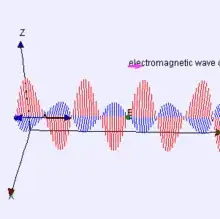One can ask the question "how old is this piece of rock" and get good answers from studying the changes in the lattice structures with time, the dispersion of other atoms in the lattice which also depends on time, etc. We are able to do this because the basic lattices of the rock are constant in time. They might break down at a certain rate, interact with extra atoms at a certain rate etc., but the base is constant in time.
Light is made up of zillions of photons in superposition (not interaction), the photons' quantum mechanical wavefunctions adding in such a way as to produce the observed light. In contrast to atoms in a lattice, the structure is instantaneous, i.e. a slice in this classical light wave solution perpendicular to its direction of motion

will contain zillions of photons running along, keeping no history except the history of the frequency of the wave which is their energy $E=h\nu$. This can be Doppler shifted and spectral lines can give a history of the travel time and the origin. So it is possible to find a history in the wavetrains coming from afar for special situations, (like the Doppler shift) and where there are intermittent signals as also with pulsars, one might get extra information from the variations of the amplitude of the light arriving, as with neutron star mergers which give the history of the merge in electromagnetic radiation (recently also with gravitational radiation, but that is another story).
Actually this completely new research on time crystals might open a window in the future of something similar to the contaminations time induces in a normal crystal where a history can be unraveled, but I am not holding my breath. No natural time crystals have been proposed which might have sent wavetrains that could be used to extract a history from the light arriving.
